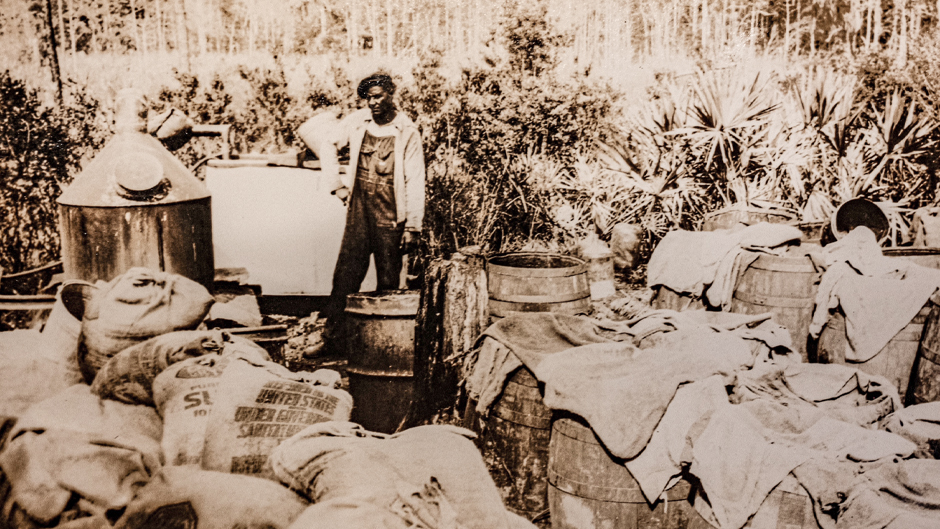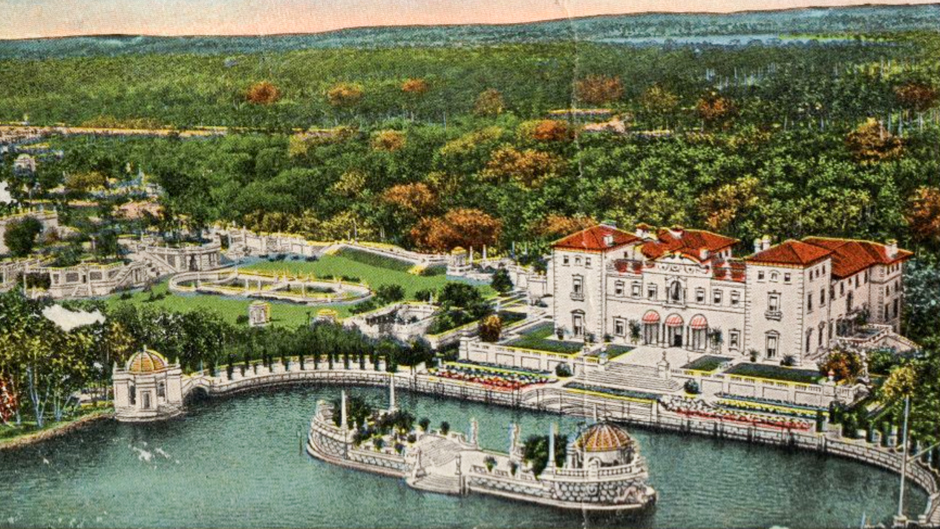When it was first built in 1916, Villa Vizcaya—now known as Vizcaya Museum and Gardens—was the grand Italian villa vacation home of affluent businessman James Deering. Today, it draws thousands of visitors a year.
It is also one of Vanessa Lopez Trujillo’s favorite buildings. Now the fourth-year University of Miami School of Architecture student is taking a deep dive into its history, along with that of the Freedom Tower and the Biltmore Hotel in Coral Gables.
Her project for a first-time class in the School of Architecture is called “Miami Mediterráneo.” It will explore, through photographs and texts, the history of the three buildings and each building’s architecture and uses throughout the years.
Her class is ArcLab 2024, Building Magic from the Archives. A previous similar class was co-taught with the Art Lab and included art history students, said Victor Deupi, senior lecturer, who teaches the class. Nine undergraduate students are enrolled in the current course.
“I pitched the idea of teaching this class at the School of Architecture because here at UM we have a substantial number of architectural materials in the Libraries’ Special Collections,” he said.
In its thousands of holdings, the Special Collections, Cuban Heritage Collection, Architecture Research Center, and Lowe Art Museum have architectural sketches, books, drawings, and postcards, as well as pottery—both pre-Columbian and Asian—that feature architectural motifs, and students had access to materials in all these archives, Deupi added.
Deupi said the students are learning crucial skills that they will most probably have to use in their careers.
“Architects often have to do exhibition design and curate exhibitions,” he said, adding that he has had to curate five exhibitions himself. “The class teaches students to understand the larger world of museum curating.”
For Lopez Trujillo the extensive research she has undertaken for her project has proved to be extremely helpful to hone her research skills.
Even though she grew up in Miami, learning details about the three buildings she is highlighting has proved to be eye-opening. Before becoming a haven for Cuban refugees who arrived in Miami in the 1960s and 1970s, the Freedom Tower was called the News Tower since it housed The Miami News, the town’s afternoon newspaper.
The luxurious Biltmore Hotel once operated as a hospital during World War II and served as the home of the University’s medical school until 1968.
“Learning about the evolution of these pieces of architecture has been amazing,” she said.
Blake Weldon, a fourth-year student, believes the class could also be helpful in his future. He is interested in architecture, furniture design, art, and art galleries.

Weldon’s project is on the Everglades. Using the vast holdings the library has on the Everglades, he is documenting the history of the river of grass, from the late 1800s to the 1960s. He found a book, “Photograph Album of Illegal Moonshine Stills Seized by Revenue Agents in West Palm Beach County Florida 1930s,” almost 100 years old, that became crucial to his research.
Through a series of black and white photos taken by Ralph A. Johnson, Weldon will show how the Everglades had a dark past. In the 1930s during the period of prohibition, the FBI cracked down on illicit distillery mills housed there. His project will show the evolution of the Everglades from the time the Seminoles and Calusa tribes inhabited it to the building of Tamiami Trail, which became Southwest 8th Street in Miami-Dade County.
“This course is teaching us how to uncover information that we may not have had access to,” he said, adding that he found the research on the Everglades eye-opening. “Personally, I did not know that we had all these historical archives.”
Once completed, the projects will be shown in a digital reproduction of the Korach Gallery in the School of Architecture as a master home page. The website will also introduce each student, their individual sections, and their story map pages and selected works crediting the various collections, said Deupi.
The students’ projects will reside on the University Libraries’ website and be accessible to the public as an ArcGIS StoryMaps digital humanities project.

